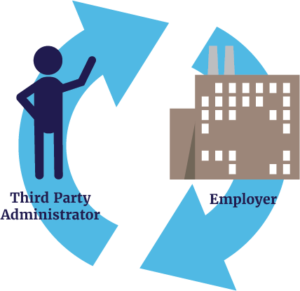Stop-Loss Insurance — The Hero of Self-Funded Healthcare
October 9, 2017 | Tina Pelland One of, if not the most common concern employers have when self-funding employee benefits is, “what if the cost becomes too high?”. It’s an entirely logical fear to have, if a group of employees or single employee costs get too high, then profit margins will fall. Luckily, Stop-Loss Insurance deflates such a concern.
One of, if not the most common concern employers have when self-funding employee benefits is, “what if the cost becomes too high?”. It’s an entirely logical fear to have, if a group of employees or single employee costs get too high, then profit margins will fall. Luckily, Stop-Loss Insurance deflates such a concern.
Stop-loss policies are built specifically for employers who self-fund their benefits program. These policies insure employers for the extraordinarily high costs of coverages included in their benefits package. There are two structures a stop-loss policy can be:
1. Aggregate Stop-loss Insurance: A policy that covers the unexpectedly high cost of an entire group.
2. Specific Stop-loss Insurance: A policy that covers catastrophic expenses of an individual employee.
Keep in mind that these policies are for exponential costs, not everyday medical expenses. Expenses have to hit an unlikely high threshold before this plan is activated, which employers are glad to use when needed.
How Stop-Loss Insurance Works?
The idea of self-funding health care and benefits is a relatively new idea. However, stop-loss insurance has been a widely used tactic for quite some time. In fact, insurance companies have been using stop-loss policies for decades. Insurance companies or brokers provide stop-loss policies, who also will produce certificates outlining the components of the policy. The policies protect self-funding employers by capping their benefits spending once they reach their expense limitations. It is important to remember that stop-loss policies are reimbursement plans, employers are responsible for the upfront cost. There are five terms employers should know that outline a stop-loss insurance policy.
1. The Trust: Who is providing the coverage. (The insurance company or broker)
2. The Trustee: The financial institution who is holding the policy and ensures reimbursements delivery.
3. The Policy: Documentation outlining the insurance plan.
4. Participation Certificate: An official document signifying that coverage has officially begun.
5. Participating Employer
What are the Benefits of having a Stop-loss Policy?
Stop-loss policies — so to speak — stop the bleeding. Whether it’s merely been a busy year for a healthcare group or one specific employee has a catastrophic episode, stop-loss policies cover costs that are far beyond budget. Employers avoid significant losses within a fiscal year, ensuring that providing employee benefits will not halt profitability. Most importantly, employers get all of the benefits of using self-funded healthcare along with peace of mind.
 How can a TPA help?
How can a TPA help?
Third Party Administrators take the worry out of using a stop-loss policy. They ensure that the policy matches an employer’s self-funded health care plan, confirming that every provided coverage is insured and protected. Specifically, Varipro works with National (US) Reinsurance Carriers to offer stop-loss policies and handles the administration from writing the policy to overseeing reimbursement.
Learn more about Stop-Loss Insurance Policies here: https://varipro.com/what-is-stop-loss-insurance/